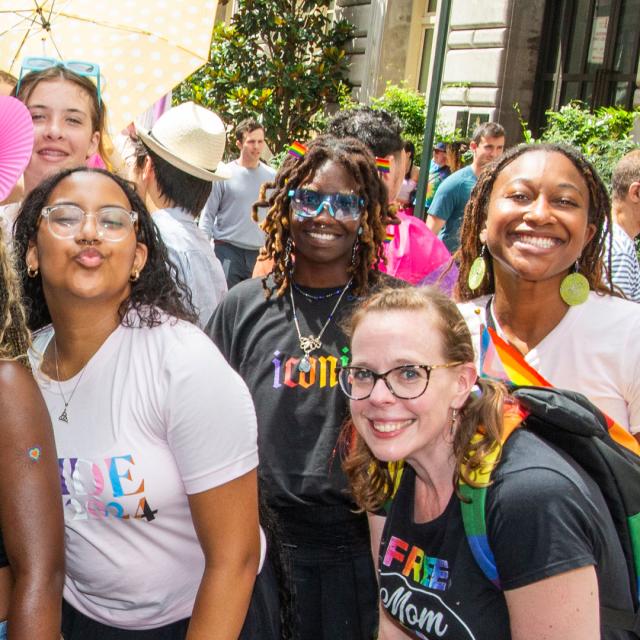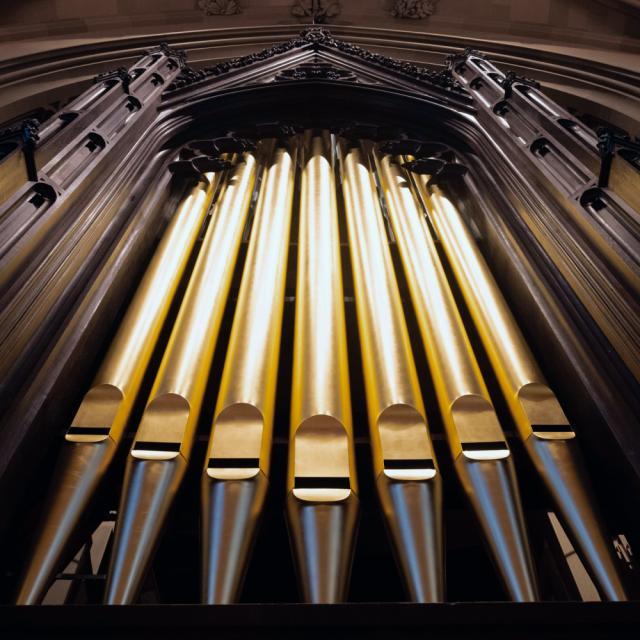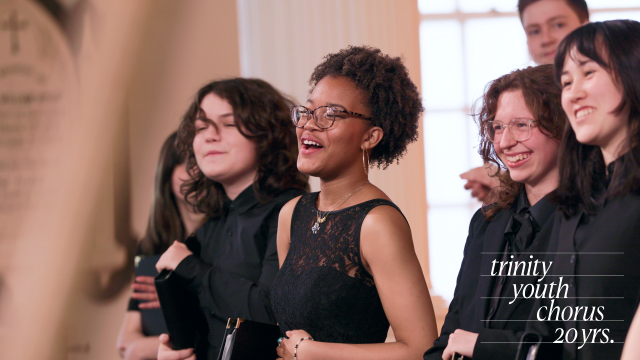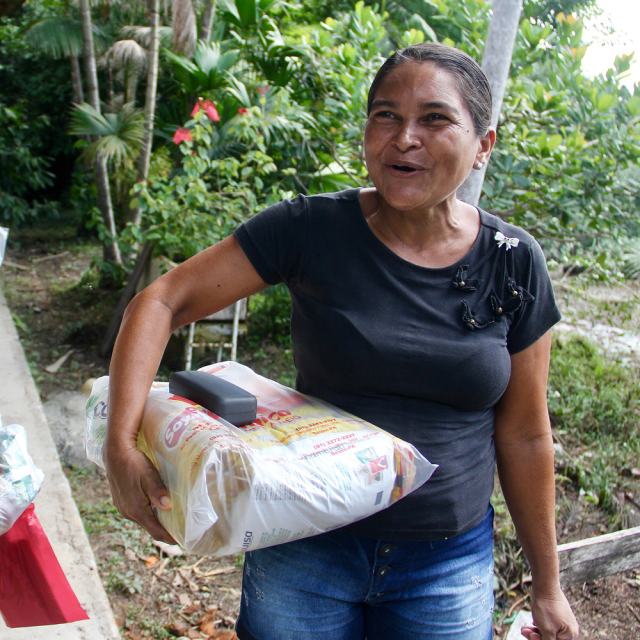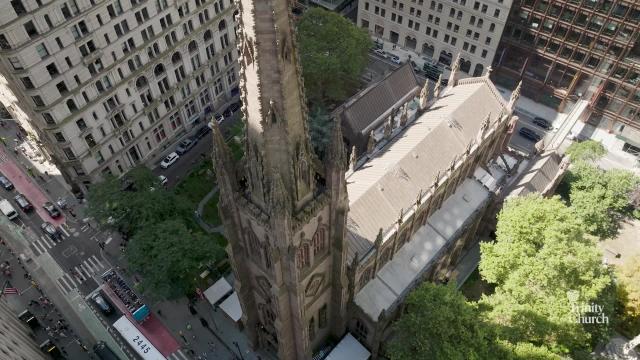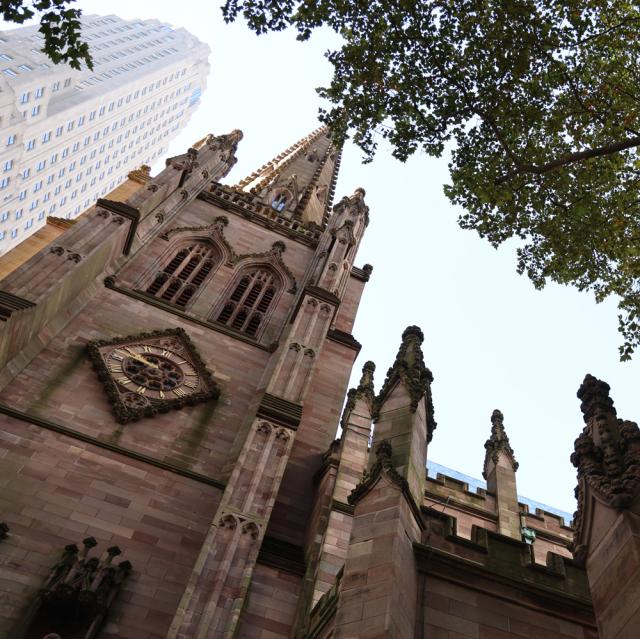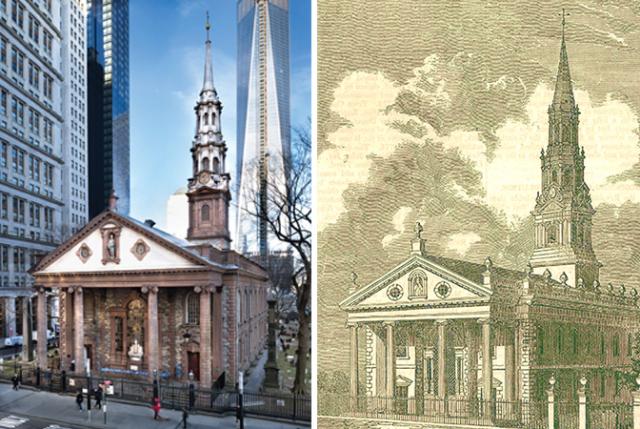St. Paul’s Chapel
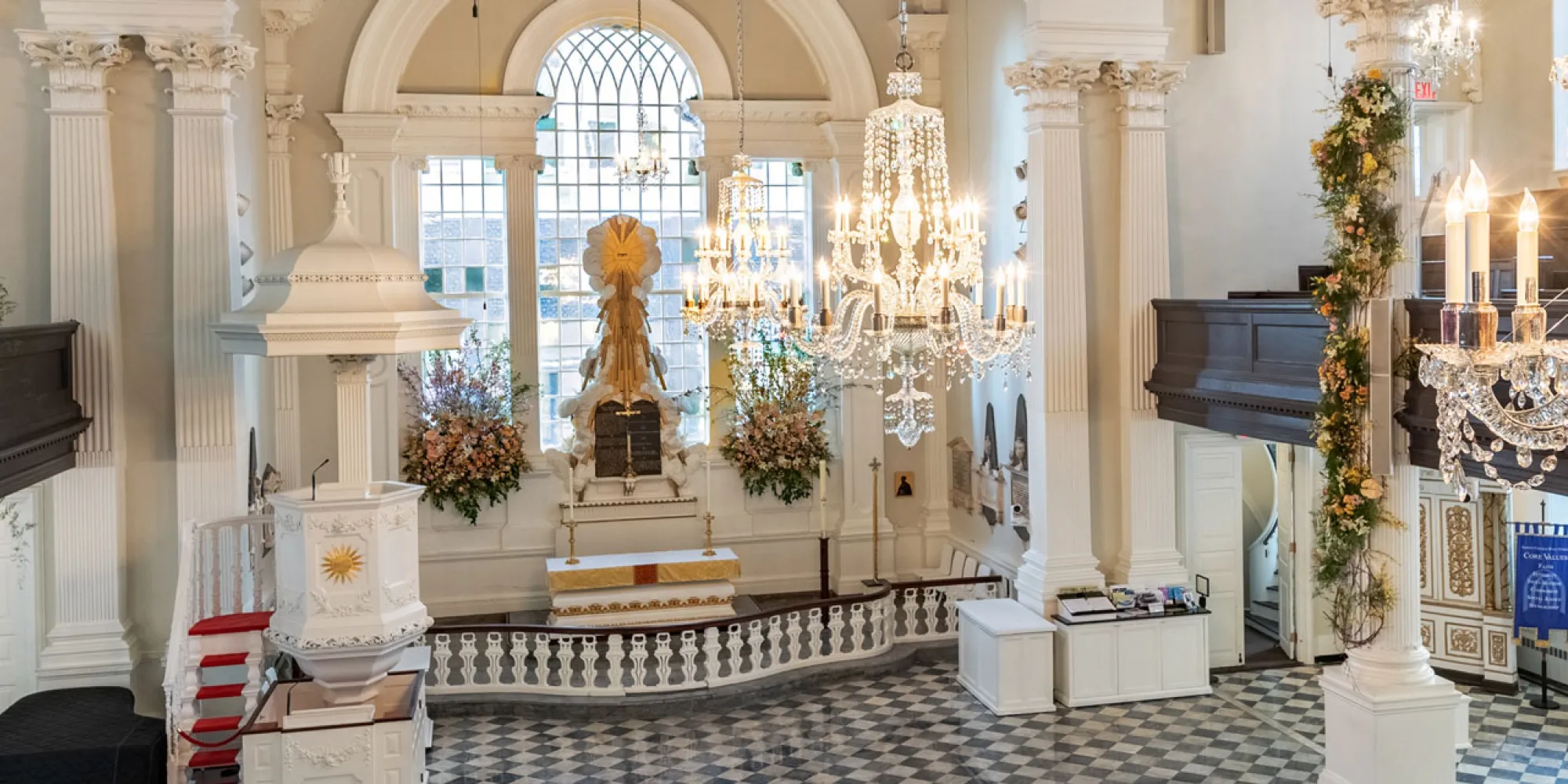
Plan Your Visit
Address: 209 Broadway, New York, NY 10006 | Broadway and Fulton Street
St. Paul’s Chapel and Churchyard are open to the public daily from 8:30am-6pm.** A security and safety check is required for entry.
**
On Friday, January 9, Saint Paul's Chapel will close at 3pm.
Highlights
Located steps from the World Trade Center, St. Paul’s Chapel became a place of refuge after September 11.
See the Bell of Hope and other items honoring 9/11 victims and rescue workers.
Visit the first monument ever commissioned by the United States Congress.
History
St. Paul’s Chapel opened in 1766 as an outreach center for Trinity Church’s expanding congregation. It was a “chapel-of-ease” for those who did not want to walk a few blocks south along unpaved streets to Trinity. A decade later, the Great Fire of 1776 destroyed the first Trinity Church, but St. Paul’s survived, thanks to a bucket brigade that ran from the Hudson River up to the chapel’s roof.
Until the second Trinity Church was rebuilt in 1790, many, including George Washington, made St. Paul’s their spiritual home. On April 30, 1789, after Washington took the oath of office to become the first president of the United States, he made his way from Federal Hall on Wall Street to St. Paul’s Chapel, where he attended services.
As the city grew around it, St. Paul’s remained a place of worship and sanctuary for unhoused neighbors, industrial workers, and immigrant communities of many faiths.
Today, St. Paul’s is the only colonial-era church remaining in Manhattan, and the oldest public building in continuous use in the borough. The chapel hosts free concerts and cultural programs, continuing its legacy of comfort, inspiration, and transformation. It is home to an active worshipping community and welcomes more than 1 million visitors every year.
Across the centuries, St. Paul’s Chapel has endured as a beacon of hope at the crossroads of history — holding the prayers of all New Yorkers and embodying our deep desire to be bound together in community.
The Little Chapel That Stood
Less than 100 yards from the World Trade Center, St. Paul’s Chapel miraculously survived the destruction of September 11, 2001. In the months that followed, the chapel welcomed thousands of recovery workers.
Shifts were grueling, and responders found respite in the 235-year-old chapel and its churchyard. Rescue crews, police, and firefighters found their way to St. Paul’s to rest and wash up. Volunteers from across the country arrived to offer care for the workers’ weary bodies and souls with food, personal supplies, counseling, and prayer.
During the nine months of ministry that followed, St. Paul’s Chapel became much more than a place to eat or sleep. It became a community of hope.
Visit to see the exhibition of items honoring the 9/11 recovery effort.
Memorial Pew
During recovery efforts, the chapel’s pews were places of prayer, meditation, and rest for recovery workers and volunteers. Thousands of letters of gratitude were taped to every surface. Over time, the workers’ heavy boots and equipment scuffed and scratched the pews, transforming them into lasting symbols of remembrance.
Iron Memorial Cross
Blacksmiths David Munn and Frederic Crist of Charlottesville, Virginia, forged this cross from remnants of the World Trade Center at the request of their friend Scott Murray, a tugboat captain who helped in the recovery effort and received care at the chapel. They wanted to express gratitude for the healing St. Paul’s provided to Murray and so many others who grappled with tragedy on a daily basis.
Cup of Life
Jessica Lee Ives, artist-in-residence at St. Paul’s Chapel from 2001–2002, created this communion chalice out of steel salvaged from the World Trade Center. The tree trunk represents a fallen sycamore that shielded St. Paul’s Chapel from debris when the towers fell.
Vestment of Unity
Patches from firefighters, police officers, and other rescue workers were pinned to this chasuble — a liturgical robe worn by volunteer clergy during worship services in St. Paul’s over the months following 9/11. The garment came to represent solidarity between recovery workers and the chapel.
The Community of the Cross of Nails
In 2005, St. Paul’s Chapel joined the Community of the Cross of Nails, a worldwide network of service organizations guided by three principles: healing the wounds of history; learning to live with difference and celebrate diversity, and building a culture of justice and peace. CCN was formed by the community of Coventry Cathedral in the United Kingdom, which was bombed during World War II.
Memorial Altar
Immediately following the attacks of September 11, friends and relatives of those who were in the World Trade Center and the surrounding area used this altar to post notes for missing persons. In time, mourners added prayer cards and mementos to memorialize the victims.
Other Architectural Highlights
Montgomery Monument: The east porch of St. Paul’s, facing Broadway, is dominated by an impressive memorial to General Richard Montgomery, a distinguished Revolutionary War officer who died in 1775 while fighting in Quebec. Montgomery is buried beneath the monument. The memorial, believed to be the first Revolutionary War monument commissioned by the Continental Congress, is the work of the French sculptor Jean Jacques Caffieri and is made of marble from the Pyrenees.
Glory Altarpiece: Because the monument honoring General Montgomery created a shadowy outline in the altar window as seen from the nave, a design for the interior of the window was made by Pierre Charles L’Enfant, the French architect who created the master plan for the city of Washington, DC. The design, executed by a woodcarver, represents God’s glory on Mount Sinai and the giving of the Ten Commandments to the Israelites, from Exodus 24.
Pulpit and Altar Rail: No direct evidence, but probably original. It’s often cited that the Prince of Wales feathers are atop the pulpit, but there are six feathers here, not three, making it unlikely.
Bells: One bell was made in 1797 by Thomas Mears of London and installed in 1834. The other was made in 1866 by Meneely and Company of Troy, New York.
The Great Seal of the United States of America: Commissioned by the vestry of Trinity Church in 1785, this seal was adopted by Congress in 1782. It features a bird (some think it resembles a turkey) holding in one talon an olive branch and in the other, a cluster of arrows. On a banner above the bird is written E Pluribus Unum, “Out of Many, One.” This is one of the earliest known depictions of the seal.
Statue of St. Paul
A statue of St. Paul stood in a niche on the Broadway side of the church for more than 225 years. The 500-pound, 7’10” figure carved from tulip poplar is thought to be one of the earliest examples of North American sculpture. It was restored and placed inside the chapel in 2016, to avoid further weather damage. A resin replica, weighing about 200 pounds, now resides in the outdoor niche.
About St. Paul, The Apostle
Born Saul of Tarsus in the first years of the first century, St. Paul’s unlikely evolution took him from fiery animosity toward the earliest followers of Jesus Christ to absolute dedication to the Gospel. After a life of ministry, Christian tradition tells us he was martyred in Rome in or near to the year 67.
In this sanctuary, we remember St. Paul as a consummate pastor, someone who lived out Christ’s call to love. This is a place where people of goodwill gather to praise God, nourish their spirits, and make connections before going out into the world to serve and seek reconciliation.
